Blue is a hard color to come by when designing or planting perennial gardens. Ohio spiderwort (
Tradescantia ohiensis), an eastern U.S. native, helps solve this color deficit by providing clusters of blue flowers in early spring. Use this finely textured perennial along a walkway, combined with bold broadleaved perennials or in an informal prairie garden. The flowers will delight you in the morning as you walk through the garden and will provide a much-needed source of pollen to female bees provisioning their nests.
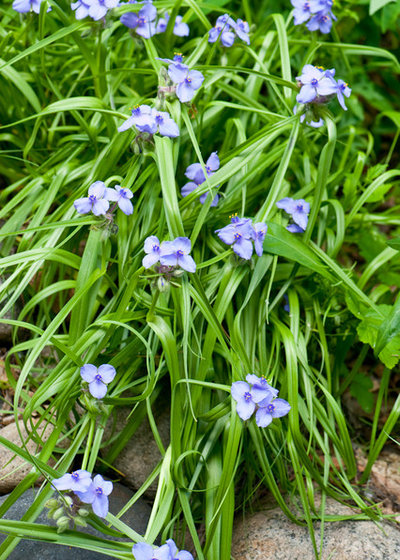
Holm Design & Consulting LLC
Botanical name: Tradescantia ohiensisCommon names: Ohio spiderwort, bluejacket
Origin: Ohio spiderwort occurs in eastern North America; the western part of the range includes Nebraska south to Texas; also occurs from Minnesota eastward to Maine, including Ontario in Canada (absent in Vermont) in the north; endangered in Pennsylvania
Where it will grow: Hardy to -30 degrees Fahrenheit (USDA zones 4a to 9a; find your zone)
Typical plant communities: Prairies, meadows, savannas and woodland edges
Soil requirement: Mesic to dry, sand to loamy-clay soil
Light requirement: Full to partial sun
Mature size: 18 to 30 inches tall and 1 foot to 2 feet wide
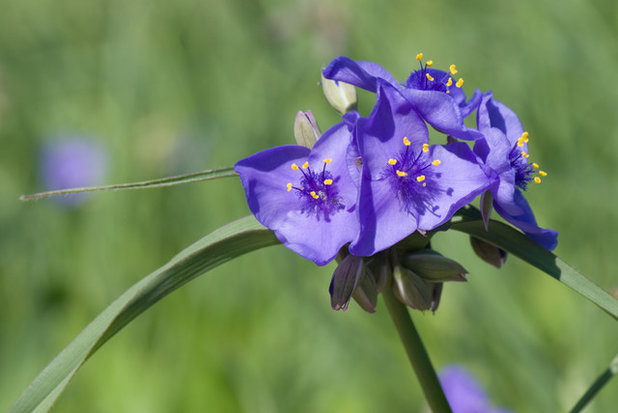
Holm Design & Consulting LLC
Benefits and tolerances: Tolerates most soil types except extremely dry soil or wet, clay soil
Seasonal interest: Bright blue, pink or purple flowers open in clusters in the morning, then close up midday when temperatures rise, providing color and interest in the spring; the grass-like, linear foliage provides textural interest and complements broad-leaved perennials
When to plant: Spring or fall; seeds and plants are available from most native plant nurseries in the Midwest and Northeast.
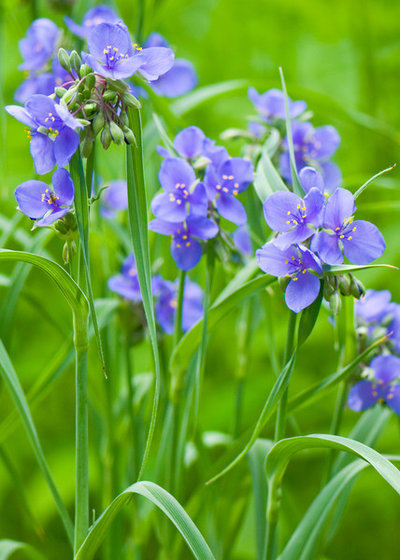
Holm Design & Consulting LLC
Distinguishing traits. The tight flower clusters are held on sturdy, upright flower stalks, presenting a colorful display in the garden. The foliage is spider-like, with long, narrow leaves that gracefully curve downward. The flower’s bright yellow to orange anthers appear suspended above the frilly hairs that surround the base of the filaments.
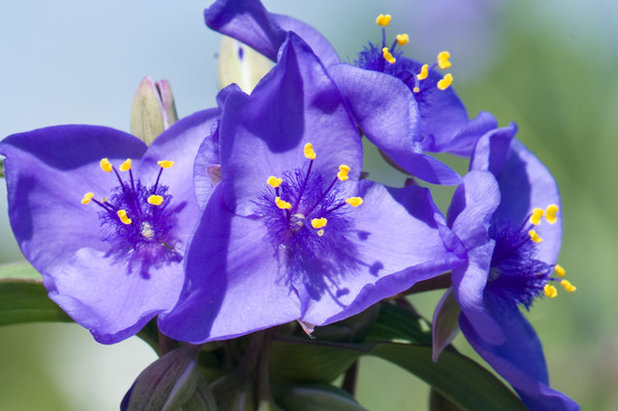
Holm Design & Consulting LLC
How to use it. The upright, narrow stature and cascading foliage can be used massed in a perennial border or in an informal prairie planting. Surround this plant with plants of equal height, including prairie grasses, such as little bluestem (
Schizachyrium scoparium) and prairie dropseed (
Sporobolus heterolepis), as well as forbs that flower at the same time, such as golden Alexanders (
Zizia aurea) and prairie phlox (
Phlox pilosa).
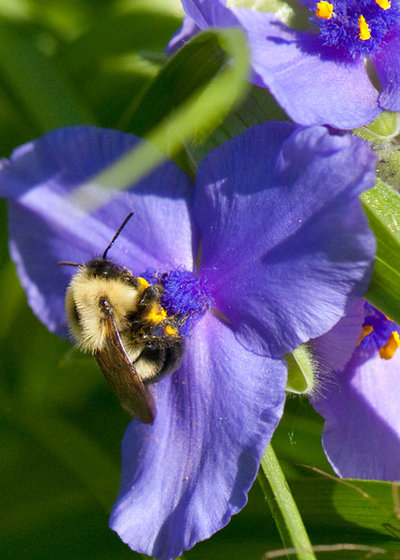
Holm Design & Consulting LLC
Planting notes. Ohio spiderwort is very adaptable and can grow and thrive in most soil types. The foliage may wither and brown if it’s planted in a site that is too sunny and dry and/or susceptible to drought. The plant will go dormant if the conditions are severe. If this occurs, move it to a site with partial sun and more soil moisture. I have not seen Ohio spiderwort browsed by deer or rabbits — that being said, anything is possible when herbivores are hungry.
Shown: A female two-spotted bumblebee (
Bombus bimaculatus) gathering pollen from western spiderwort (
Tradescantia occidentalis),
a spiderwort with a Midwestern to Western range
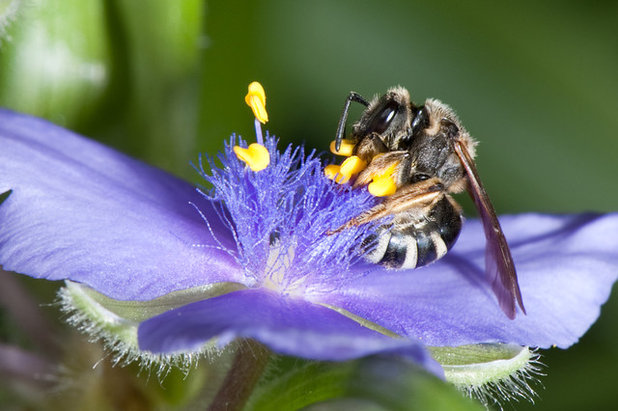
Holm Design & Consulting LLC
Ohio spiderwort can be tricky to grow from seed in pots. The germination rate is often low, and the seed requires a longer cold stratification period (120 days) than many other native perennials. Sow seeds in fall directly in the ground in the desired location rather than attempting to grow in pots.
Shown: A female sweat bee (
Halictus sp) gathering pollen from western spiderwort
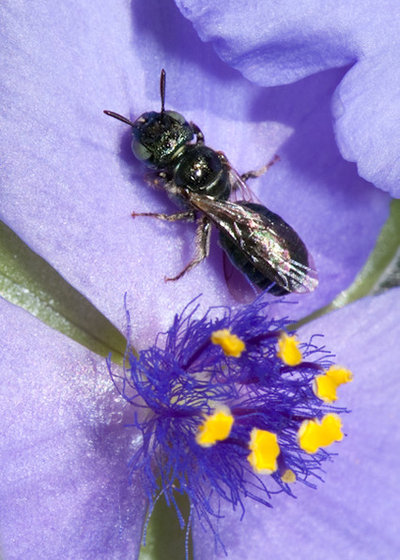
Holm Design & Consulting LLC
Pollinator notes. Ohio spiderwort flowers are nectarless. Bees, flies and even butterflies will alight on the flowers probing for nectar but won’t find any sugary rewards. Female bees collecting pollen to provision their nests are the predominant visitors. Syrphid flies are also common and feed on the pollen.
Shown: A small carpenter bee (
Certaina sp)





